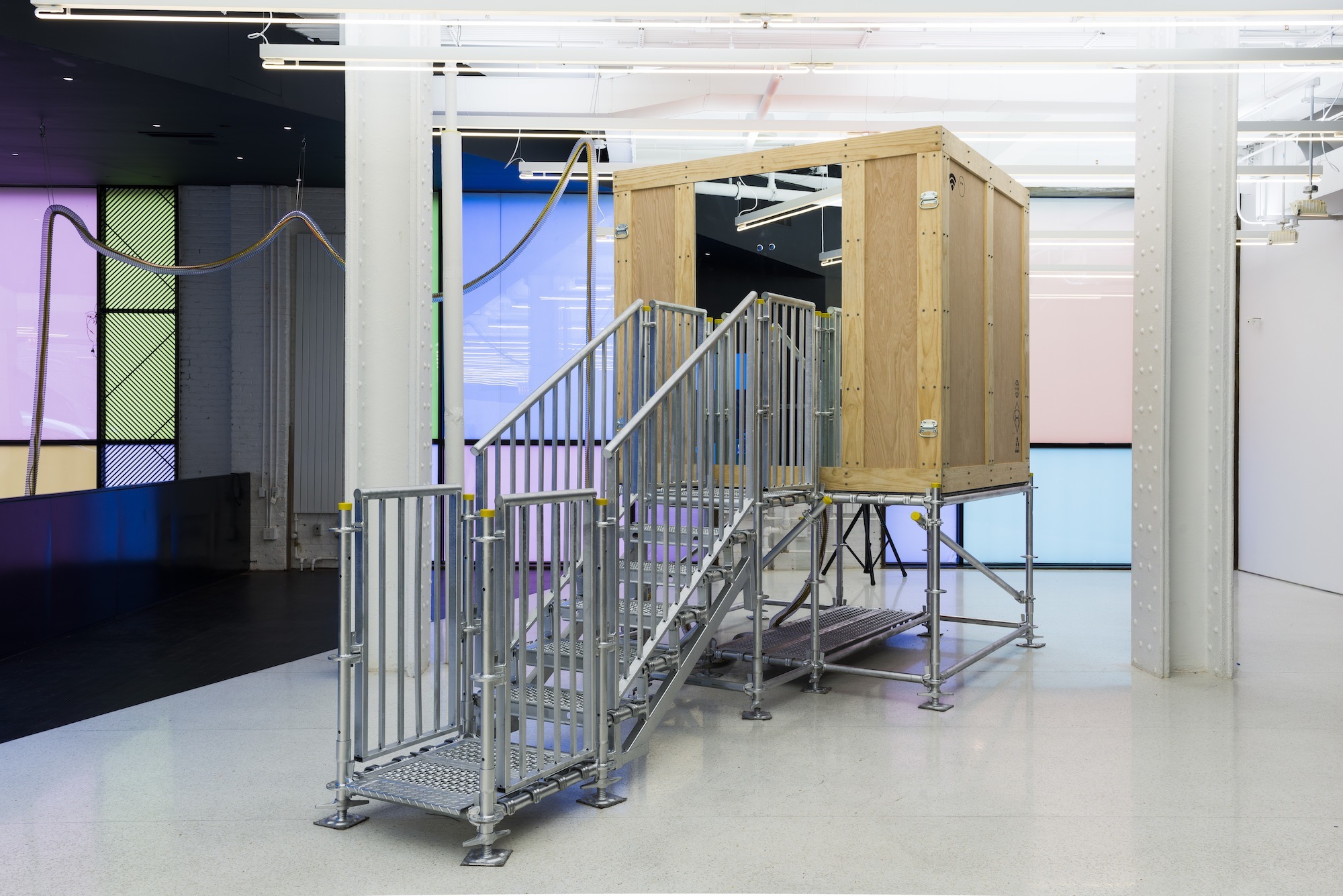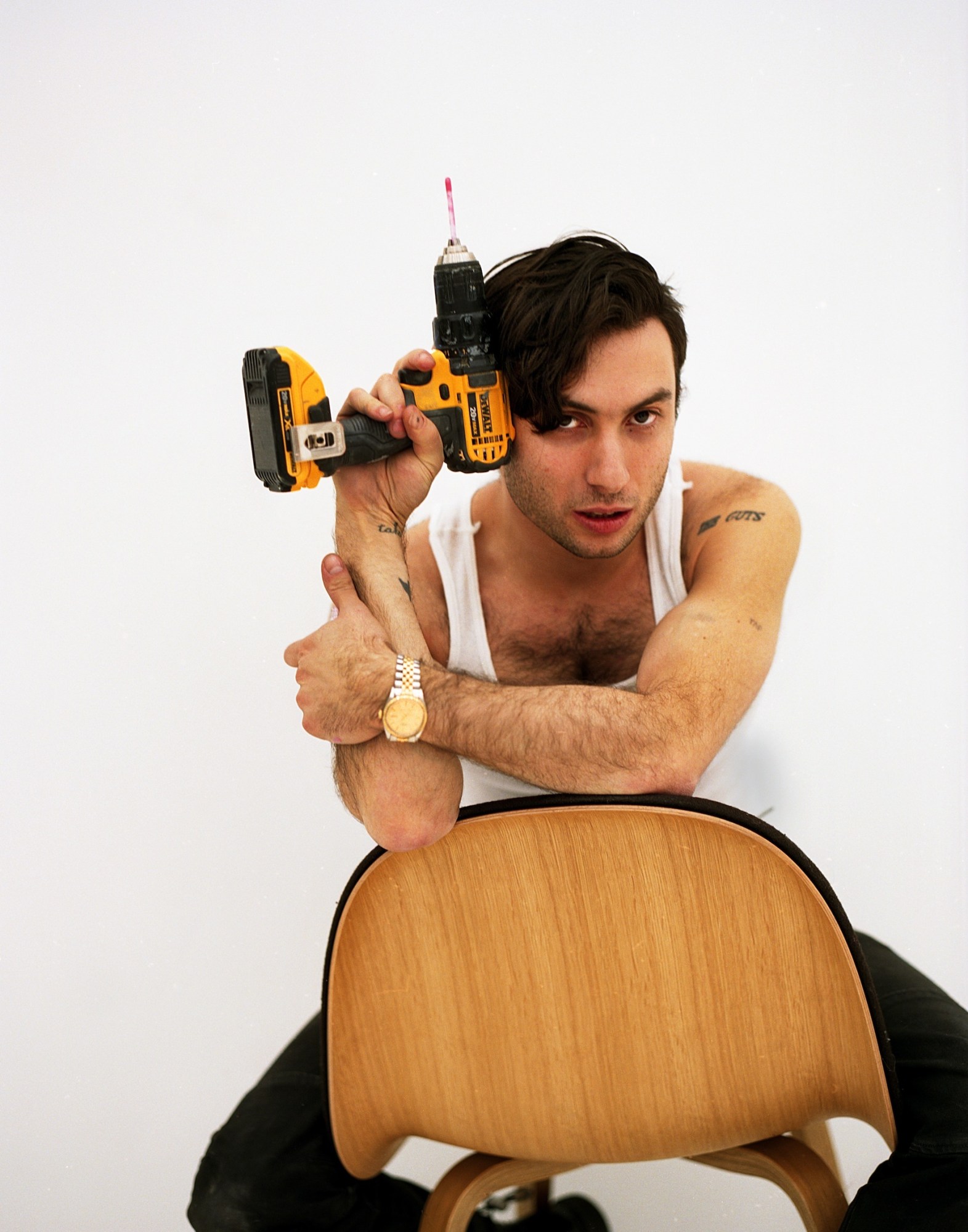Ryder Ripps’ artworks don’t just walk the ever-disappearing line between online and IRL, they jump all over it. Last year, he went from being the New York Times-approved “consummate internet cool kid,” to being caught up in a whirlwind of controversy because of his techno-social explorations. Ripps’ work often raises questions about the digital age it seems his chorus of critics would rather not ask.
Today at Red Bull Studios, Ripps opened what is perhaps his most ambitious installation: a physical model of the internet. Titled Alone Together, Ripps’ dual performance and sculpture channels the online activities of six user-performers stationed at cubicles downstairs up into a large, mirrored box. The collective chronicle of their activities is only viewable to one person at a time, effectively replicating the overwhelming flood of selfies, likes, and hashtags each of us encounter every time we log on. Ahead of the installation’s opening, we caught up with Ripps for his takes on the future of the wide, wired world.

What was the starting point for this installation?
I did a performance in this space when it opened two years ago, and was contacted again about showing here. This space is really conducive to sculpture, so I wanted to think of some large-scale installation that would fit in a natural way. I came up with the idea of creating this projection box, mostly because I love Marcel Duchamp’s Etant Donnés at the Philadelphia Art Museum.
I was there recently and saw it for the first time!
I love that piece because it was created so long before computers but gives you the feeling of an illusion, a mediated farce of reality. Today, an Instagram feed, your Facebook page, and reality TV all posit themselves as being representations of something that happened, but it’s very much a farce. The other thing I love about the Duchamp piece is that it’s so intimate; it directs the viewer in a one-to-one way. When you’re looking at it, no one else is. There’s something really beautiful about that to me, and that’s very much how a computer is, too. Our common experience with the computer is an intimate one.
So that idea of the box was the starting point. I wanted to keep things natural, so I just asked the user-performers to do whatever they normally do on the internet. The aim is to siphon their activity into the box in a way that is congested and momentous and voracious. I wanted to visually describe and replicate the feelings I get, and that I think a lot of other people probably experience, when I open up my feed: this overwhelming relentlessness.
So it’s like watching the internet happen?
Exactly. The overarching purpose of the sculpture and performance is to create a microcosm of the internet: something physical, small scale, almost like a model. The internet is so gargantuan and mysterious, the ways it actually works are becoming lost on people. But by making a model, hopefully it’s not lost. By having user-performers actually present, you start to realize the human and emotional elements of the internet, and conversely, what the internet is doing to humanity.

The installation considers the paradox “the more connected we are online, the more physically withdrawn we become.” Tell us more about that.
I think about how crazy it is that people make love and then look at Instagram a minute after. People don’t even clean their rooms because they’re so obsessed. There’s nothing wrong with that, but there’s no question about it: people have become more physically withdrawn. The need to look at other people, the need to look up, is diminished when you have the world in the palm of your hand. What’s dangerous about that is that it’s very much your world. It’s hard to get the world; we all have our very micro versions of this macro thing.
Why involve City as School, an alternative public high school, with this installation?
I went to City as School and it was the greatest experience of my life. The basis of the program is that high school dropouts can earn credit through internships. I worked at a music studio, I created programming for public access television, I even interned at a hydroponics facility. I learned way more that year than I did when I was in college. It’s a program that makes sense for creative people.
Alone Together is very much alive: it’s something that thrives with humanity and isn’t static. It’s the internet; it’s powered by humans. I figured it would be great if we could incorporate what Powrpint [a collaborative that provides free courses about the tools of digital art production] is doing with City As into the whole exhibition as something that keeps the space more alive. I love that feeling of activity happening and the wonderment you have when you’re 16. To me, that’s what art is all about. I want to hold on to that sense of endless possibility.
Ho, your exhibition of large-scale oil paintings, opened just last month. The media are completely different, but do you feel these projects touch on similar themes?
Definitely. I consider myself a conceptual artist, and to me, that means pure freedom. Art is all about the unfettered freedom to express in any way you deem fit. Thematically, these two shows are very similar. I have visions in my head about how the world is made up of blood and guts and Jesus — all these images that are really powerful and corporal. There’s love and birth and death and all these real things that you can’t escape. People will get hit by cars, emotions will happen, people will fall in love, the computer isn’t going to stop any of that. Those are the big themes that art is always addressing.
I like to think about how a computer changes those themes; how it affects love or interactions between two people, the way we coalesce and form groups. All those elements are what make us human. That’s why I’m not really into addressing the internet in a very techy way. I’m a programmer, and this show requires a lot of programming, but it’s not about showcasing the code because that’s not the reality. It’s a reality, but it’s not the reality I find to be most significant. Ho is very much about love and sexuality, what it means to create identity, and what it means to interpret someone’s creative identity. This show is about some of those things: the identity aspect, how people self mediate, and how the internet makes us alone together.
Alone Together runs through April 12, more information here.
Credits
Text Emily Manning
Photography Job Piston
Photography assistance Richie Shazam
